The first thing you probably do when you decide to begin a job search is to update your resume and get ready to showcase your skills. Skills are at the centre of what makes or breaks your career, so you’re likely focused on highlighting your strengths in direct relation to your desired position. But when we think about our skill sets as workers, how exactly do we categorize them? More likely than not, we think about our skills on a linear trajectory.
On a surface level, this makes perfect sense. We might begin bagging groceries at the supermarket. Then, we move up to a cashier. If we work hard and learn how to manage others,we might get promoted to assistant manager. The idea behind this linear trajectory is typically centred within a specific industry. There is nothing wrong with this whatsoever, especially if your dream job is to make it to the supermarket’s staff manager. However, let’s push ourselves to reframe our skills through a circular, interdisciplinary perspective. This allows us to redefine professional limits, place a better value on ourselves as workers, and adapt to unexpected career shifts (e.g., the pandemic severely impacting particular industries).
This article will review the following:
- Why is this line of thinking standard?
- How do we shift our perspective?
- How do you frame yourself as the ideal candidate?
- You’ve landed the job. What comes next?
Why is this line of thinking standard?
- When we land a position, we hope to continue upward. But our employers will encourage only skills that entertain what they think will add the most value to the company. This is standard in recruiting and promoting. But this could lead to conditioning the worker to believe in a strict framework for professional growth.
- A lack of confidence will lead to workers underestimating their abilities.
- Many skills are hidden and difficult to measure on paper. For instance, a Master’s degree will explicitly display your expertise in a specific area. But what about critical thinking and problem-solving abilities? How about giving and receiving criticism?
How do we shift our perspective?
To get rid of this linear thinking regarding how we present and work on our skills, let’s pretend like the workplace is a classroom. It’s a place of learning and achievement that highlights both technical and soft skills in its curriculum. But what happens when teachers group certain students based on varying skill sets? Studies show that when kids are “tracked” based on basic and advanced abilities within the same grade level, lower-achieving students suffer even more than if they hadn’t been tracked. Research also suggests implicit bias affects these outcomes.
So what about the workplace? How does siloing and a linear framework affect how we learn and strengthen skills? How does it affect how we sell ourselves as ideal candidates? What if when we are grouped into a single category, we are ignoring the stimulation of other abilities?
To shift our perspective, start by asking the above questions.
How do you frame yourself as the ideal candidate?
The first step in marketing yourself as the ideal candidate is to figure out which skills you need to display. Clarify the following:
- What are you currently recognised for?
- What would you like to be recognised for?
- What are your career goals, and which skills are required to achieve them?
- What does this employer need from you?
Be sure to think of the details here. For instance, when thinking about your career goals, consider micro and macro ideas. Which technical skills do you need? Are there negotiation skills involved? How do positive social interactions affect your workload? How many miscommunications have occurred in the past six months with your boss?
Take your time with this list. Allow yourself to be reflective in the moment. So while you’re at work, you may become aware of hidden skills that make you stand out. From here, you can utilise your information gathering to create a story about you as an employee. This narrative will help sell yourself as a top talent for an employer and prop you up to strengthen those skills as you do the job.
Use this narrative to enhance your entire application. Check out Best Practices For Navigating Your Job Interview and 7 Tips For Writing A Winning Cover Letter for more on using this information throughout the recruitment process.
You’ve landed the job. What comes next?
It’s important to come full circle once you’ve landed the job. This means that it’s up to you, and you alone, to advocate for projects that continuously strengthen your desired skills and incorporate a balanced framework into your daily responsibilities. Simply because you’ve sold yourself as an employee with various skill sets doesn’t mean that your employer will validate your skills through each work experience.
The linear trajectory of company mobility is familiar and easy to digest. However, pushing your professional limits and digging deep to find hidden skills may take you to an entirely new level of confidence and ability. Hopefully, you land a job that views the workplace as a space of learning and growth. If not, take on the challenge to shift company culture. Here are some ideas:
- Push for leadership to rethink their internal mobility process. How does the company make internal and external hiring decisions? Do executives know the talent they already have? How can they tap into what they don’t know?
- Become an advocate for training that incorporates new skills to a variety of employees. This helps connect the dots between potentially isolated working groups and views the company through a holistic lens. But, be careful not to waste anyone’s time. Make sure everyone involved will gain concrete takeaways for their responsibilities while also understanding others’ roles.
- Carve out time for yourself to learn. Though you’re busy, exhausted, and maybe even drowning in paperwork, you must make time to learn. Treat it as a top priority, and you will see the results.
Rethinking your skills as a worker will help you in your professional development. And when you think of the workplace as a community of learning instead of a list of tasks, you could tap into the potential you didn’t even know existed!






